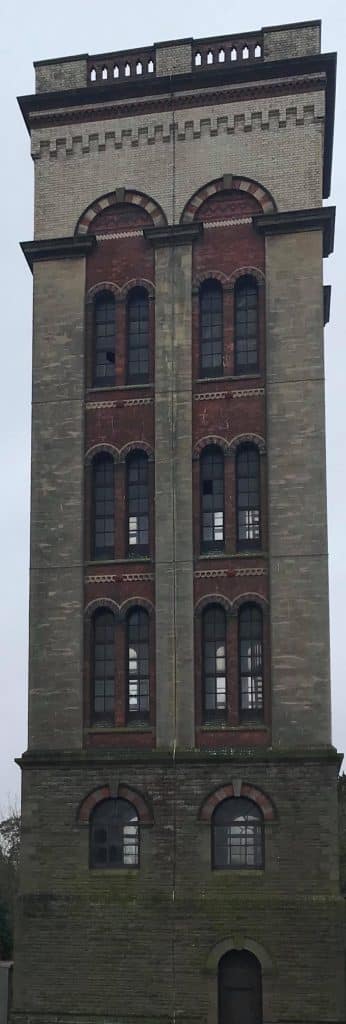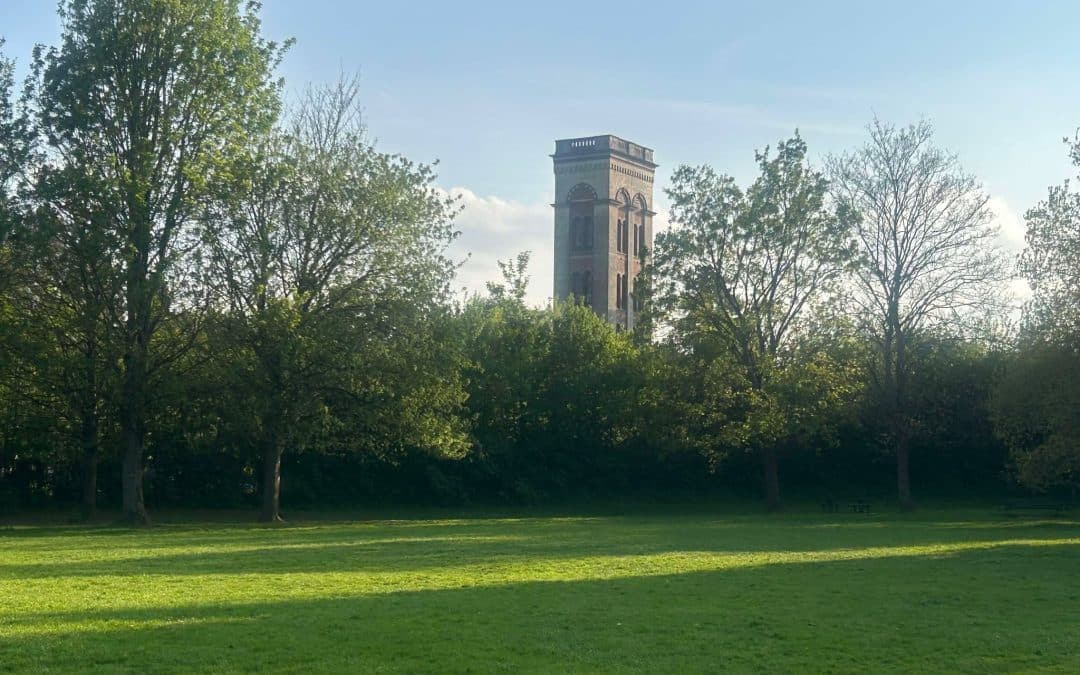HISTORY | The Broomy Hill Water Tower. A brief history by Paul Williams.
As Hereford continued to expand, with houses being built above the pumping station, the water tower was erected in 1883 with a 45,000 gallon tank. The existing beam engines were not suitable for the extra lift required to the tower tank, and a high-pressure pump by Joseph Evans & Co was installed in an annexe building added to the east end of the pumping station in 1882. The pump has since been removed.
In the early 1890s there were concerns about the capacity and maintenance costs of the beam engines, and the City Surveyor and Engineer John Parker, recommended a modern rotative steam engine. A vertical, inverted triple-expansion condensing steam engine by Worth Mackenzie and a Lancashire boiler by Riley Brothers, both of Stockton on Tees, were subsequently commissioned. And, by 1895 the Lancashire boiler had been inserted into the original boiler house and an engine house, constructed by a resident engineer of Worth Mackenzie, had been added to the west end of the pumping station to house the engine. The Worth Mackenzie triple-expansion engine was at the forefront of technology and could pump one million gallons of water every 12 hours.
At Broomy Hill it performed two jobs: lifting raw water from the River Wye with three pumping rams and lifting clean water to summit of the tower with two high-pressure pumps. However, the demand for water from the tower became too great for the pumps to cope with and by 1906 a twin-cylinder Worth Mackenzie steam engine was installed in an annexe added to the west of the engine house. This was dedicated to lifting water to the tower tank. These two engines and the Lancashire boiler remain in situ.
In the C20 steam power was replaced by internal combustion engines, and then electric power. Broomy Hill was unusual in that it went straight to electric power, and electric pumps were installed in the base of the water tower in 1911, and in the original engine house in 1914. The steam engines were used intermittently during the Second World War and again in the 1950s during a major flood.
In 1960 the Herefordshire Waterboard was created, which in 1974 became part of the Welsh National Water Development Authority, now known as Dwr Cymru Welsh Water. A new pumping station was erected as well as a new water intake, and the old pumping station became The Waterworks Museum, leased to Herefordshire Waterworks Museum Ltd. In 2004 the slate roof coverings were renewed and much of the brickwork repointed. The glazed extension to the east and south elevation of the old pumping station was built in 2006.
The tower was granted Grade 2 listed status in Feb 1991.


